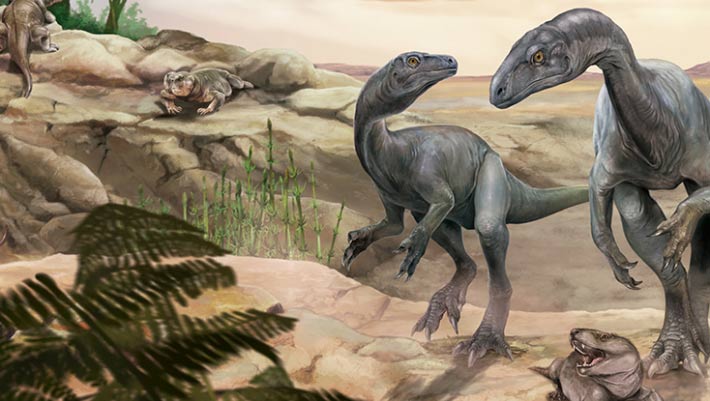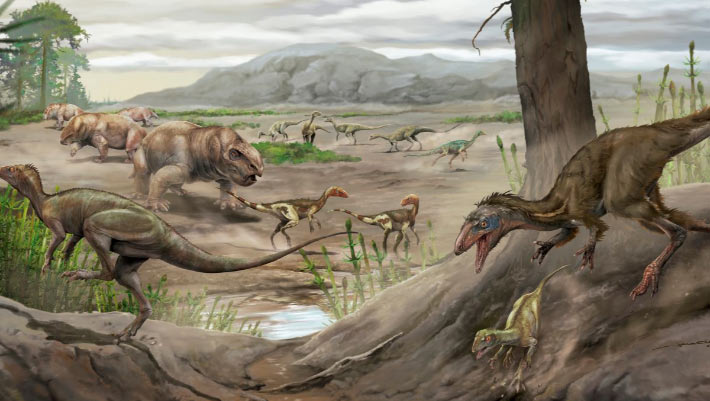In a groundbreaking discovery, researchers have uncovered 9,000-year-old rock art that offers new insights into the relationship between ancient humans and dinosaurs. These petroglyphs, etched into rocks in Serrote do Letreiro, an agricultural site in Paraíba, Brazil, are positioned near dinosaur footprints believed to date back to the Cretaceous Period, approximately 66 million years ago.
A Significant Discovery
The petroglyphs, which were first noticed in 1975, were recently rediscovered during a series of drone surveys, revealing more of these ancient markings. Researchers believe the rock art was strategically placed close to dinosaur tracks, with some drawings positioned just two to four inches away.
The close proximity of the sketches to the dinosaur prints suggests a deliberate effort to align the human-made artwork with the natural fossil records. The images were likely created by small, seminomadic groups of hunters and gatherers who inhabited the region between 9,400 and 2,620 years ago. This discovery points to the possibility that these ancient communities may have revered the fossilized footprints, marking a cultural connection to the prehistoric world.


Human Creativity and Dinosaur Footprints
The petroglyphs, which differ in style, hint that multiple individuals may have contributed to the creation of this artwork. Leonardo Troiano, Coordinator of Cooperation and Promotion at the National Historic and Artistic Heritage Institute in Brazil, noted that the alignment of the petroglyphs with the dinosaur footprints reveals, “a deep reverence for fossil tracks among Brazil’s ancient, indigenous communities.”
The designs offer evidence that early humans were not only aware of the natural world around them but also deeply connected to its fossil record, making this site an essential part of the region’s cultural heritage.
The Role of Technology in Uncovering the Past
While the petroglyphs were initially spotted in 1975, it was drone technology that allowed the researchers to explore the site in greater detail, leading to the identification of more intricate drawings. This modern technology has proven invaluable in mapping out the rock art and understanding its context alongside the dinosaur footprints.
Troiano and his team of researchers, including paleontologists Aline Marcele Ghilardi and Tito Aureliano, as well as archaeologist Heloisa Bitú, expressed pride in the significance of the findings. According to Troiano, the discovery provides “insight into the intersection of paleontology and archaeology,” furthering our understanding of how ancient humans engaged with the fossilized remnants of creatures from millions of years ago.


A Unique Bridge Between Past and Present
The Serrote site is not only significant for its petroglyphs and dinosaur footprints but also for what it reveals about the ancient people who once inhabited the region. By combining paleontological and archaeological methods, researchers have uncovered a cultural connection that bridges the gap between ancestral symbols and the fossil record.
The site highlights the enduring relationship between humans and the natural world, reinforcing the idea that Brazil’s indigenous communities had an acute awareness of the natural environment long before modern science uncovered the full scope of dinosaurs and their footprints.
Source link


